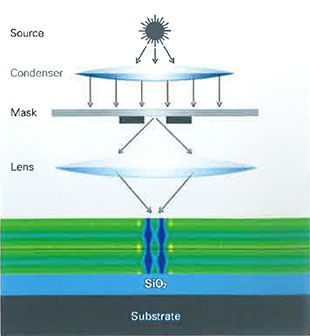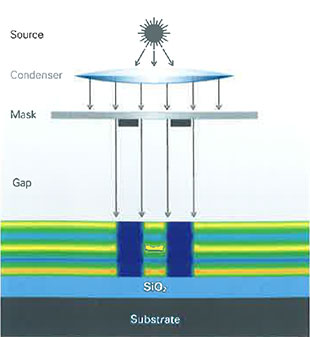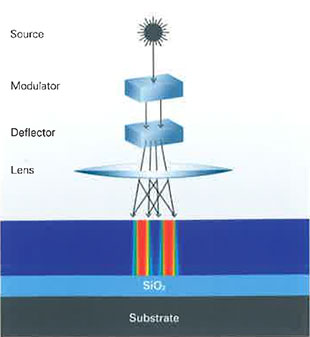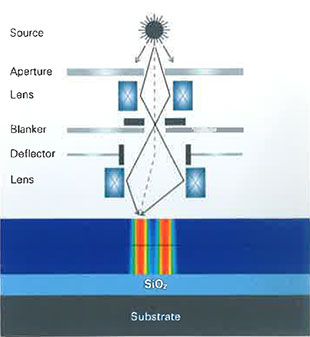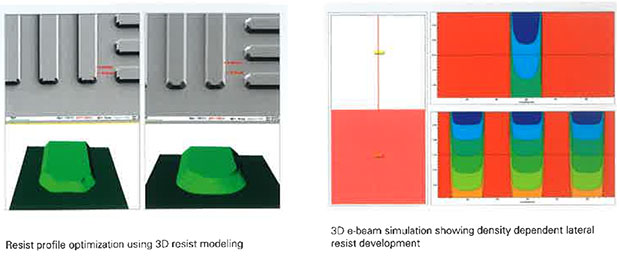Layout And Orocess Optimization Platform For Most Common Lithography Technologies
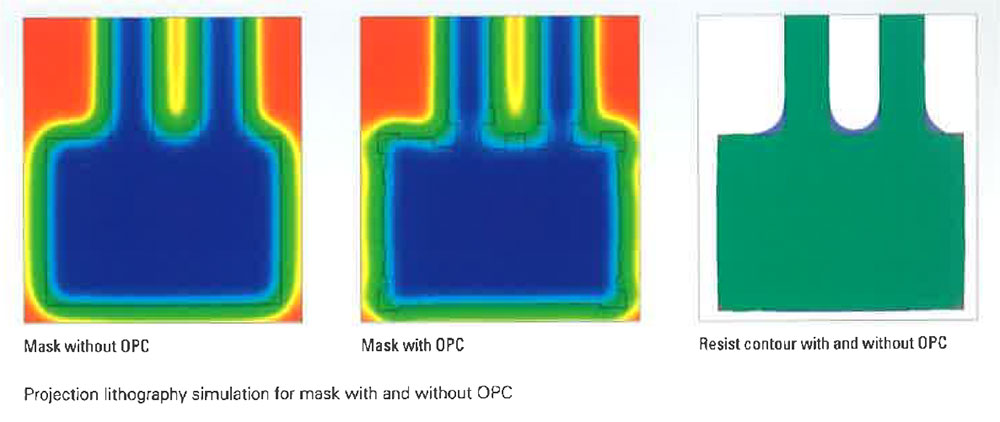
Experimental layout optimization and process development is highly time consuming and cost intensive. Lithography simulation allows access to numerous virtual experiment results in a short period of time and thereby significantly reducing development and production cost, and time to market by fast virtual exploration of a large parameter space. LAB enables further reduction in feature size for proximity, projection, laser and electron-beam lithography, for applications such as IC manufacturing, flat panel display, LED, MEMS, 3D packaging, mask manufacturing and nano-fabrication. The fast and accurate calculation of the intensity image allows layout optimization (OPC), mask layout verification, optimization of process conditions (e.g. illumination, stack) and process window (e.g. gap or defocus and exposure dose variation) by varying the layout and/ or exposure parameters. Thousands of experiments can be computed “overnight” without producing masks or “burning” wafers. Once a good image contrast has been obtained, 3D resist development modeling allows further optimization of the resist profiles. Complex process effects such as lateral development, density dependent bias in electron-beam or in laser lithography can be analyzed and compensated.

Projection Lithography
The intensities are computed based on Fraunhofer diffraction theory solving the Hopkins equation, followed by propagation in the resist. (including all reflections within the stack) using the highly accurate transfer-matrix method (TMM).
- Models reflective-and refractive-projection lithography, e.g. large area projection-printer, scanner, stepper including high NA and liquid immersion
- Any source types, either laser source (single wavelength) or arbitrary spectrum (e.g. broadband mercury lamp), with any shape (e.g. circular, annular, or user defined source shapes), source polarization
- Binary, gray-tone, or phase shift masks
- Any substrate material, coating, resist, and topography
- Thick resist, resist bleaching, and CAR

Proximity Lithography
The intensity at arbitrary distances from the mask, from contact to large gap, is computed using the Rayleigh Sommerfeld integrals, which takes into account all the diffraction others scattered from the mask.
- Models reflective-and refractive-proximity lithography, e.g. large area proximity-printers. FPD color filter exposure tools, and mask aligners
- Any source type with arbitrary spectrum and shape, e.g. broadband mercury lamp, laser, collimation angle, and user defined source shapes
- Support for SUSS MO Exposure Optics®,enabling source shape and source mask optimization(SMO)
- Binary, gray-tone, or phase shift masks
- Any substrate material, coating, resist, and topography
- Thick resist with resist bleaching

Laser Lithography
The intensities in the resist are calculated by incoherent superposition of the partially coherent beam (with parameters wave-length, numerical aperture (NA), beam size on substrate, or beam radius, and focal length of the tool optics).
- Models all major exposure tools for mask or water exposure
- Includes the illumination optics of HIMT exposure tools
- Simulates gray-tone lithography
- Any substrate material, coating, and resist
- Thick resist with resist bleaching
Electron Beam Lithography
The intensities in the resist are computed using a 3D point-spread-function (PSF) that describes the stack dependent spread of the energy.
- Models Gaussian-Beam as well as Shaped-Beam tools
- Interfaces to various 3D Monte-Carlo PSF packages, such as TRACER, or a user defined Multi-Gaussian PSF
- Simulation of dose modulated layouts (e.g. 3D lithography, proximity effect correction)
- Simulation of 3D resist development front over development time

Resist Modeling
For all lithography methods, LAB also offers the simulation of the 3D resist development process using sophisticated and proven models such as Mack4, CAR models, or simple diffused image and threshold modeling.
LAB facilitates resist model calibration to experimental data (e.g. contrast curve, CD measurements, or resist profiles). Material and resist parameters are managed in a database which can be maintained and extended by the user internally. GenISys continues to add additional materials and resists into the default database.

LAB The Most Powerful Lithography Simulation Tool Kit
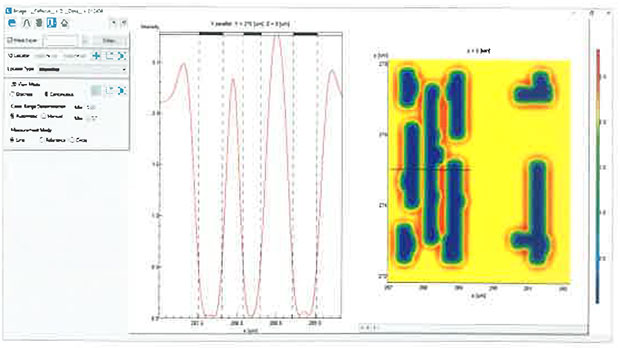
The VisualFLOW™ user interface allows fast process flow creation by simple drag & drop to connect functional modules, providing increased productivity and efficiency. A comprehensive library of modules is available for building powerful flows. User Libraries allow storage and easy re-use of common blocks of modules for often-used functions. This simple yet highly functional approach empowers the user to concentrate on the essential simulation tasks. Results can be evaluated by powerful visualization capabilities, including 1D, 2D and 3D views. The combination of 1D and 2D views and the capability of arbitrary cut-lines along with image quality metrics such as slope and log-slope allows a very detailed analysis. Critical dimensions (CD) can be measured either manually within the various or automated through the metrology module. Process Window, DOF analysis, FEM, MEEF, contrast NILS, and reflectivity analysis are easily available. Optimization of the mask layout can be easily performed either manually through the integrated layout Editor or semi-automated through powerful layout operations (Extract, Bias, Boolean… or using the optionally available Rule-Based OPC function and the Model Based OPC for projection exposure).
LAB combines accurate simulation with strong tools for automated analysis (loop and optimize for varying parameters). And evaluation (1D, 2D, 3D visualization, Matrix view, Process-Window, …).
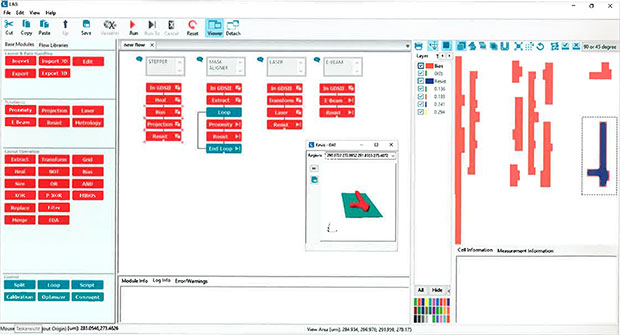

LAB Major Features

Layout Operations
- Import and Export of all major layout formats (GDSII, OASIS, CIF, DXF)
- Loading full mask layout data
- Extraction ( Region, Layer, Cell), Transformation (Scale, Shift, Mirror, Rotate)
- Heal, Bias, Boolean operations, Merge.
Layout Editor
- Creation of new layouts
- Layout modification within flows for manual OPC
Mask Definition
- Arbitrary layouts, regions of large mask data
- Mask corner rounding modeling
- Gray-Tone mask
- Phase shift mask
Stack Definition
- Any substrate and coating material with wavelength specific n/k parameters from material database
- Anti reflection coating (ARC)
- Resist with wavelength dependent n/k, bleaching, Dill and development parameters (Mack4, CAR, Percolation, Threshold)
- 3D Topography (optional)
Projection Exposure
- Source spectrum (single line, broad band, peak-width)
- Source shape (circular, standard shapes of major stepper tools, user defined)
- Fast and accurate simulation of 2D or 3D intensities based on Fraunhofer diffraction solving the Hopkins equation and Transfer-matrix method (TMM)
- Projection aligner, scanner, stepper of any NA including liquid immersion
Proximity Exposure
- Source spectrum (single line, broadband, peak-width)
- Source shape (circular with collimation angle, user defined, SUSS exposure optics)
- Mask/IIIumination tilt in X and Y
- Fast and accurate simulation of 2D or 3D intensities based on Rayleigh-Sommerfeld and Transfer-matrix method (TMM)
- Arbitrary gap from contact to large distance
Laser Beam Exposure
- Models all major laser tools for mask or wafer exposure
- Includes the illumination optics of HIMT exposure tools
- Simulates gray-tone lithography
Electron Beam Exposure
- Models Gaussian as well as Variable-Shaped-Beam tools
- Interfaces to various 3D Monte-Carlo PSF packages, or user defined Multi-Gaussian PSF
- Simulation of dose modulated layouts (3D lithography, proximity effect correction)
Resist Development
- Simple and fast threshold and diffused aerial image model
- Mack 4 for positive and inverse Mack negative resist development model
- Car with dynamic Acid/Quencher diffusion/reaction model
- Resist development model using development rate table
- Surface inhibition for Mack4 and Percolation model
- Extract 2D resist contours as layout data
Metrology – Analysis - Calibration
- Automated measurement at multiple metrology positions
- CD measurements at user defined resist height, or remaining resist thickness measurements
- Dose to Size, Reflectivity for resist and ARC thickness optimization
- Focus Exposure Matrix (FEM), Gap Exposure Matrix for Proximity, Process Window (PW), Depth of Focus (DOF), MEEF, for multiple metrology points
- Calibration of resist parameters with experimental data (contrast curves, FE matrix, arbitrary metrology data)
- Flow parameters can be optimized to match a specified target using the Optimizer module
Visualization
- 2D visualization of aerial image, bulk image, Photo-Active-Compound (PAC) concentration, resist profile
- 2D views in continuous color made, or discrete contour lines at user defined thresholds
- Arbitrary cut-lines in 2D views, 1D view along these cut-lines
- Combination of 1D and 2D views nest to each other
- Overlay mask and/or target layout in 1D and 2D views
- 2D Matrix views, 1D Matrix or Overlay view
- Analysis of image quality : intensity, image slope, image log-slope
- 3D visualization of resist profiles
- View of collected metrology results as graph, e.g. FE Matrix (Bossung plot), process window
Import 3D — Export 3D
- Save and load 3D simulation data (image intensities, concentration)
- CSV Export

Pushing The Limits
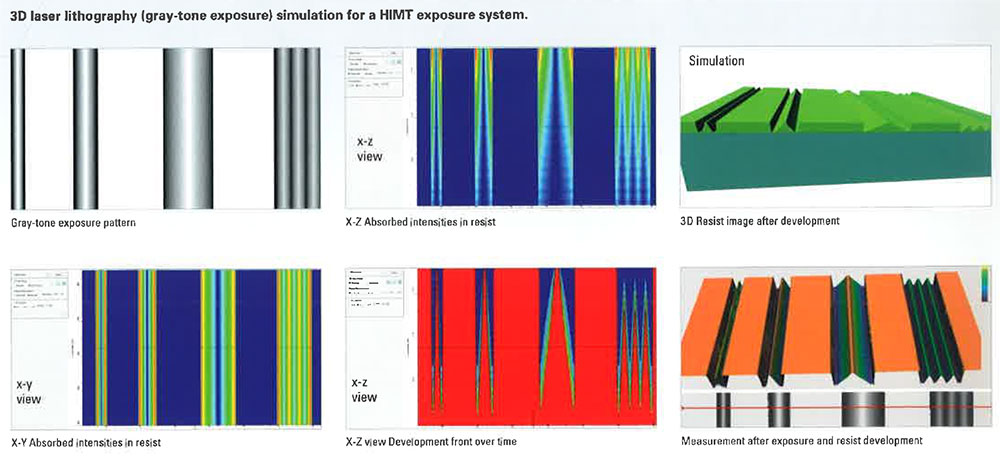
Lithography simulation for projection exposure (stepper) has been a key enabler for IC manufacturing to keep pace with market demands and Moore’s law. Although 30 years ago the end of optical lithography was predicted for feature sizes < 1 um, optical lithography is currently doing < 30 nm today in volume manufacturing. Without lithography simulation and the simulation based resolution enhancement techniques such as OPC, source shaping and source mask optimization these dimensions would have never been possible.
LAB offers the power of simulation to push the limits for IC and non-IC applications (e.g. display LED, MEMS, special devices) with the strength of GenISys providing flexible packaging and licensing, fast development of needed functions, highly dedicated application support and a strong cooperation with users worldwide.
LAB combines the major lithography techniques used today (projection, proximity, laser, electron-beam) on a single simulation platform. This enables users to compare plus develop mix and match processes.

LAB Packaging
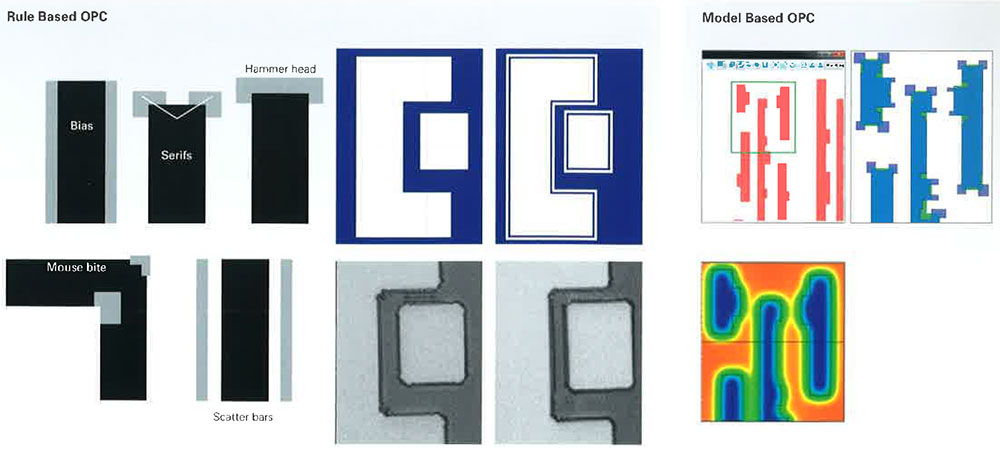
LAB is available in different license packages combining multiple lithography methods with comprehensive layout operations, optional OPC techniques and the power and flexibility of VisualFLOW. The packages allow fast and easy simulations with access to all parameters, powerful analysis features, semi-automated verification and optimization. The computational power can be extended by adding additional parallel users, and increasing the number of cores for parallel processing.
Extensive Tool and File Format Support
- Models any proximity lithography tool (mask-aligner, contact-printer, proximity-printer), e.g. SUSS, EVG, and large area FPD exposure tools
- Supports projection lithography tools such as steppers for IC manufacturing, projection scanners
- Laser exposure tools for mask making and direct write (e.g. Heidelberg Instruments and other laser exposure tools)
- Models electron-beam lithography tools (Variable-Shaped-Beam, Gaussian-Spot-Beam) for mask making or direct write
- Import and Export of all major layout formats
- Open format for data-exchange with other software (CSV, GDS, others on request)
Flexible Licensing and Platform Support
- USB license key for dongle and network
- Flexible on off-the-shelf PCs (>4 GB RAM recommended)
- Windows 7/8/10 64bit, Linux64 Red Hat 5.4+, Ubuntu 14.04+
- Multithreading
Maintenance and Support
- Technical Support Hotline (e-mail, Skype, phone)
- Frequent updates with enhancements, new functions, performance turning, and bug fixes
- Regional trainings, technical workshops, and user meetings
- 12 month maintenance service included in license price
- User feature requests have a high priority for implementation in future updates

See More GenIsys Products
https://genisys-gmbh.com/web/products/lab.html



